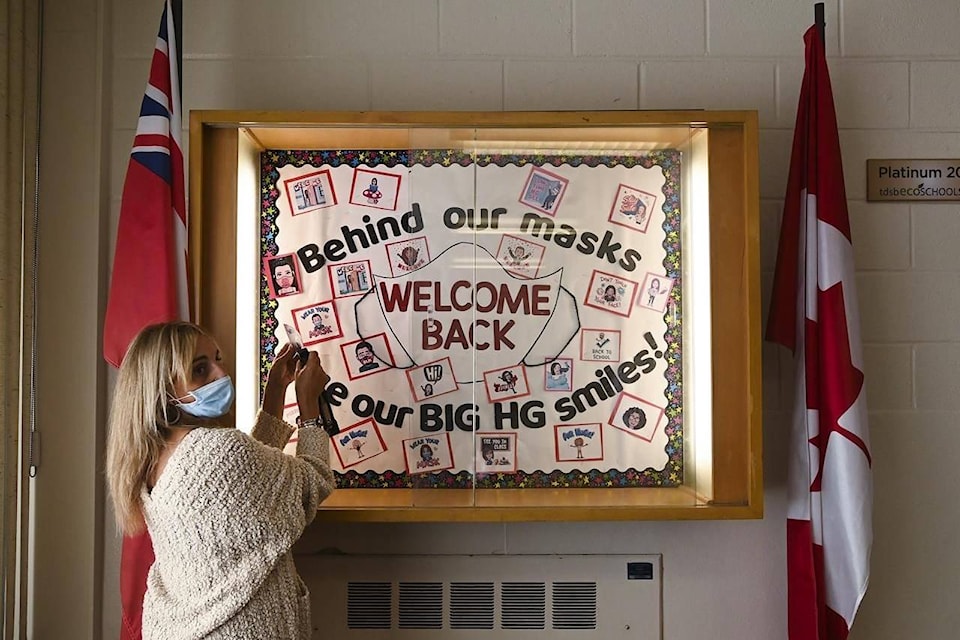Canadians may wish to forget the year 2020 ever happened, but across the country, museums and archives are working furiously to ensure a full record of the COVID-19 pandemic is in place.
“If it happens 50 years from now, again, we want to be able to have information to give the perspective of the challenges,” said Sylvain Belanger, a director general at Library and Archives Canada.
But figuring out how to preserve the story of the pandemic poses a series of challenges.
One is the ephemeral nature of where so much of people’s experiences are taking place: the internet. Social media posts come and go, news headlines change hourly, and new sources of information and disinformation appear or disappear, Belanger said.
At Library and Archives Canada, a team of six people hoover up as much of the official record as possible. The amount of data they’ve currently collected is the equivalent to the data a person would use up if they streamed more than 2,000 movies on Netflix.
At the Canadian Museum of History, and similar institutions, the work is broader.
Capturing the language of the pandemic is one part: words like “social distancing,” the lockdown cocktail known as the “quarantini” and the “you’re on mute” uttered in nearly every single video conference call.
Saving photos and videos is another element, whether it is Canadian musicians streaming impromptu concerts from their living rooms, teachers wearing masks in the classroom, soldiers entering long-term care homes or portraits of what isolation looks like in the Northwest Territories.
Then there are the physical artifacts: homemade masks, crafts made from toilet paper rolls, colourful rocks painted by children to be strewn along paths, even the little sticky signs on sidewalks asking people to keep their distance.
What among those will become as iconic to the pandemic as the photo of a sailor kissing a woman in Times Square at the end of the Second World War remains to be seen, said Dean Oliver, the museum’s director of research.
Knowing what to collect and how much of it evolves over time, Oliver said.
“There isn’t a checklist that says here’s the magic number,” he said.
Documenting the pandemic is difficult because Canadians are still living through it, said Anthony Wilson-Smith, president and CEO of Historica Canada, which among other things runs “The Memory Project” to record the stories of war veterans.
“It’ll take awhile for people to come out the other end, much like post-traumatic stress disorder, where, when it’s too immediate, you can’t talk about it at all,” he said.
But he said that what people will want to know decades from now is what they ask veterans today: how did you feel? What was it like?
Oliver suggests Canadians who want to make a record document those feelings.
“Many of the other aspects of your experience — where you moved, what you bought, your tax return, your census record — the future historian or your descendant will be able to get at in an impersonal way,” he said.
“But they will not be able to see you and feel you and understand how you saw and felt unless you tell them.”
One emerging issue is figuring out how to reflect the experiences of those whose lives have been disproportionately impacted, including racialized communities and women.
“There are a lot of data sets, but the voice of women is missing in numeric data sets,” said Yoo Young Lee, the interim head of information technology at the University of Ottawa, who also works on digital initiatives for the school’s library.
“We need the stories.”
She and her colleagues have launched an archive specific to women’s experiences, but it is a slow process. One challenge is that a reliance on using what people post online means those who don’t have access or choose not to use social media are missed.
The other reality, said Michelle Gewurtz, supervisor of arts and culture at the Peel Art Gallery, Museum and Archives, is that people tend to only post the lighthearted moments online.
Her region, just outside Toronto, is currently in the midst of second lockdown, due to a rise in cases.
There, multi-generational families are locked down in cramped quarters, and getting a sense of what that looks and feels like is difficult, she said.
It’s become clear, she and others said, that what initially began as a project to document COVID-19 in the year 2020 will stretch far beyond.
“This isn’t going away.”
Stephanie Levitz, The Canadian Press
Like us on Facebook and follow us on Twitter.
Want to support local journalism? Make a donation here.
